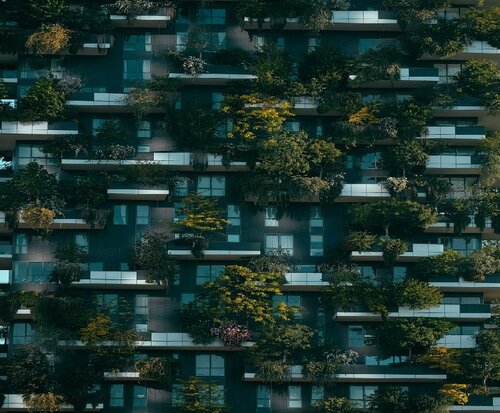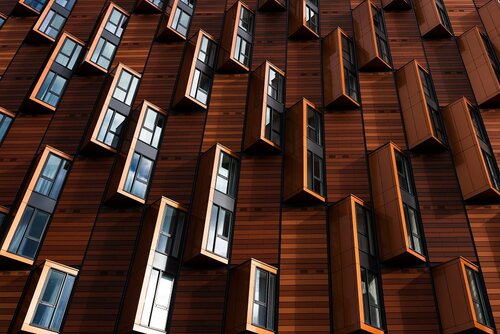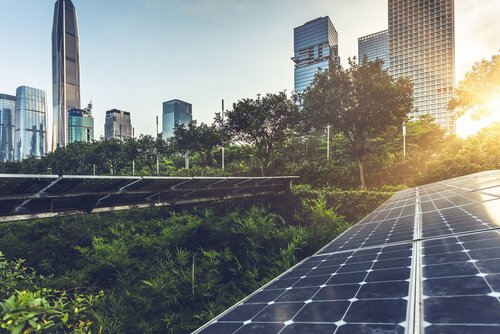Modular, climate-neutral and recyclable
Industrially prefabricated modules, circular construction and the use of new digital tools will be typical features of a new european Bauhaus 2030.
A large proportion of buildings in 2030 will consist of industrially produced modules with recyclable components. The prefabricated modules will be delivered and fitted together on site so that they can easily be dismantled again and the raw materials can then be reused.
The requirements for buildings and their desired functions form the basis of their planning and development. The new digital tools are being devel oped to help make the planning process fit for Industry 4.0. The focus is not on the individual process steps but on digital product lifecycle management which will allow us to see the whole of the product lifecycle.
All phases, from construction and use to the demolition of buildings, will use the same interconnected data.
The planning and development of the modules is being carried out with partners and with industrial manufacturers of innovative solutions. Flexible standard components will be used which can be parameterized and which are optimized for the Cradle to Cradle design principle. The systems and products used in the building can therefore easily be separated again so that the building will act as a repository of raw materials.
In 2030, the focus will be on the building as an all-round entity which consists of healthy building products and industrially prefabricated systems and is integrated into a completely digital process cycle. Moreover, it will also act as a power station which generates its own sustainable energy.
The advantages at the micro and macro level are selfevident: Buildings in 2030 will be characterized by a high level of energy efficiency – ideally they will be climatepositive, or at least they should have reduced emissions of CO2. They will be repositories of raw materials consisting of recyclable modules, and this will increase their efficiency throughout the product lifecycle due to the completely transparent planning and production and the efficient processes with short development, production and construction times.
THE NEW EUROPEAN BAUHAUS FOR THE 21ST CENTURY

‘The Green Deal must also be a new cultural project for Europe! Every movement has its own appearance and its own attraction. We must bring design and sustainability into harmony with each other.’ The President of the European Commission, Ursula von der Leyen, explained this in a newspaper article and demanded a new European Bauhaus.
The ‘first’ Bauhaus just over 100 years ago is rightly associated with the transition to the industrial age. The new European Bauhaus 2.0 offers us the opportunity to communicate the idea of the European Green Deal. The message should be that a contemporary and attractive lifestyle can bring together three ideals. It can be convenient, digital, and sustainable.
The new European Bauhaus 2.0 offers us the opportunity to communicate the idea of the European Green Deal. The message should be that a contemporary and attractive lifestyle can bring together three ideals. It can be convenient, digital, and sustainable.
The Bauhaus of 1919 was considered to be elitist. A new Bauhaus movement should not have this character. Instead, it must stand for the compatibility of construction and nature. Sustainable economy, reuse of materials, renewable energy, preservation of species and a real circular economy – these are the crucial factors. With the C2C design principle we can fulfill these goals.
The European Bauhaus 2.0 needs to create completely climate neutral cities which are an attractive place to live, with efficient use of resources and reusability.
The goal is to develop a new aesthetic standard characterized by the Green Deal which can harmonize design and sustainability.
10 Futuretheses for the construction and real estate sector
Contact
Are you interested in discussing the future of the real estate sector with us?


